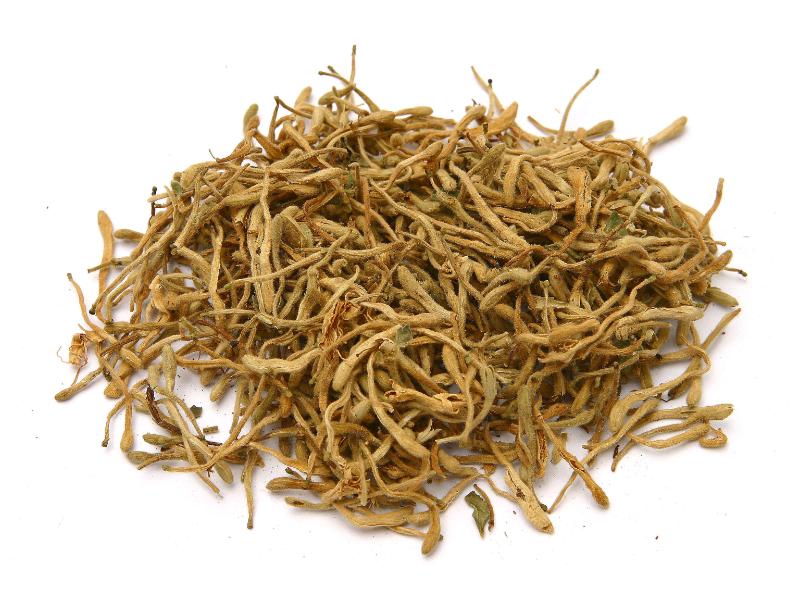Search in medicinals
Lonicerae Flos
Lonicera [flower]
金银花 〔金銀花〕 jīn yín huā

Alternate English names: honeysuckle [flower] Japanese honeysuckle [flower]
Alternate Chinese names: 金花 jīn huā; 金藤花 jīn téng huā; 双花 shuāng huā; 二宝花 èr bǎo huā; 二花 èr huā; 忍冬花 rěn dōng huā; 银花 yín huā
Kingdom: Plant
Origin in PRC Pharmacopoeia: Lonicera japonica Thunb.; Lonicera hypoglauca Miq.; Lonicera confusa DC.; Lonicera dasystyla Rehd. (PRC Pharmacopoeia)
Origin in unofficial sources: Lonicera japonica Thunb.*; Lonicera henryi Hemsl.; Lonicera lanceolata Wall.; Lonicera confusa DC.*; Lonicera hypoglauca Miq.*; Lonicera dasystyla Rehd.*; Lonicera similis Hemsl.; Lonicera fuchsioides Hemsl.
Use: Medicinal
Category: Heat-clearing agents / Heat-clearing toxin-resolving agents
Properties: Sweet; cold.
Channel entry: Lung, stomach, and large intestine channels.
Actions and indications:
- Clears heat and resolves toxin: Swollen welling-abscesses, clove sores, boils, and other
sore s. - Disperses wind-heat: Initial-stage warm disease.
- Checks dysentery: Heat toxin dysentery.
- Treats painful swollen throat due to wind-heat or heat toxin: For sore throat from heat toxin, combine it with heat-clearing toxin-resolving medicinals such as Shè gān (射干 Belamcandae Rhizoma, belamcanda [root]) and Mǎ bó (马勃 Lasiosphaera seu Calvatia , puffball). For sore throat due to wind-heat, combine it with wind-heat-coursing medicinals such as Bò hé (薄荷 Menthae Herba, mint) and Niú bàng zǐ (牛蒡子 Arctii Fructus, arctium [seed]).
Dosage and method: Oral: 10–30g in decoctions.
Warnings: Use with care when treating patients suffering from spleen-stomach vacuity cold or qì vacuity sores with clear pus.
Product description: The dried flower buds are clavate, slightly contorted, 2–3 cm long and 2–3 mm thick. Their exterior surface is yellow or light brown and is covered with short soft hairs and glandular hairs. At the base is a small, thin, green calyx. The bud cuts open to reveal five stamens and one pistil.
Quality: Large unopened yellowish-white buds are the best.
Production area: Most places, with production highest in Shāndōng, and the best quality produced in Hénán.
Etymology: The name jīn yín huā 金银花, literally gold and silver flowers,
so called because the plant has both yellow and white flowers.